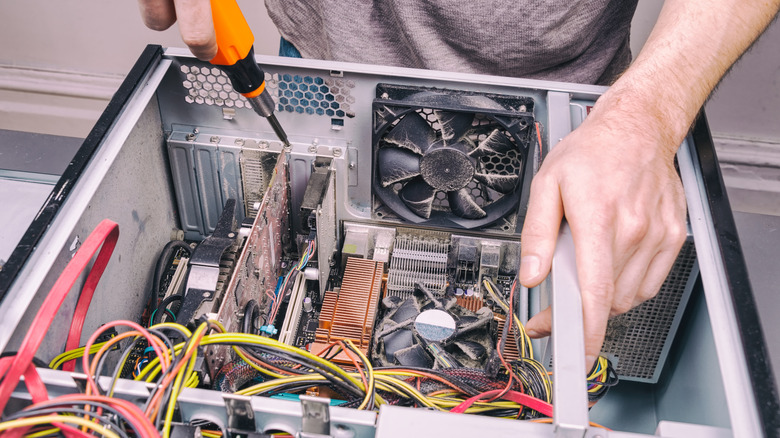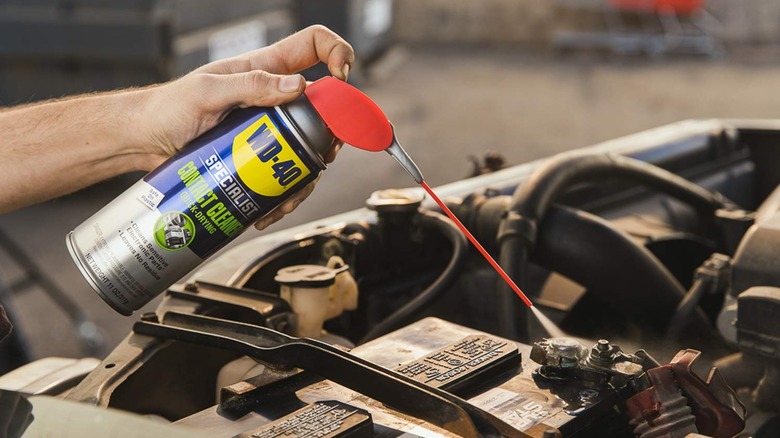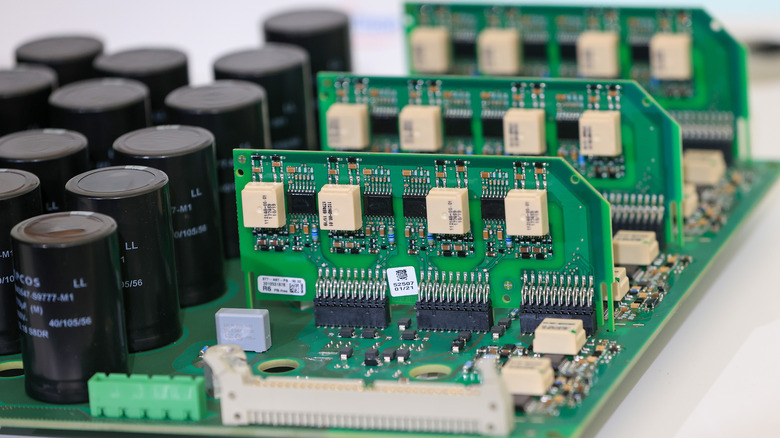Why WD-40 Beats Out Compressed Air When It Comes To Cleaning Electronics
When you need to clean the sensitive components of your electronic devices — computer internals, charging ports, etc. — what's the first tool you usually reach for? Probably a can of compressed air, right? A completely sensible option. Compressed air is a great way to clean loose dust and crud out of your gadgets without risking damage to them or yourself with physical contact.
However, compressed air alone can't always handle the job. If the contaminants have been baked in by powerful heat, especially on larger, industrial-grade devices, a little bit of air won't shake them loose. Rubbing alcohol is another option, but using alcohol to clean electronics is an extremely delicate, time-consuming process that may require specialized tools.
In these extreme cases, what can you use instead? Well, have you considered popping a can of WD-40? No, not the usual can of multipurpose lubricant, but rather a can of specialized cleaner for electronic devices.
A can of Contact Cleaner
In addition to its signature lubricant and degreaser, WD-40 also produces a line of specialist-grade products, one of the most useful being Electrical Contact Cleaner. This does bear stressing — do not use traditional WD-40 to clean your electronics, as those chemicals are not designed for safe application on sensitive devices.
The Electrical Contact Cleaner, however, is specially formulated to be safely applied to electronic components like circuit boards, battery terminals, electrical panels, and switches. It's also great for clearing out crystalized battery corrosion and flux.
The secret weapon of this formula is its ability to evaporate almost instantly after application. As opposed to something like alcohol, Contact Cleaner leaves no stains or residue after you spray it. It loosens up any contaminants, and then poof, it's gone. You might need a little brush to wipe off any loose gunk, but thanks to the spray, any stragglers should fall off with minimal effort.
How to use Contact Cleaner
Using WD-40's Contact Cleaner isn't a particularly complicated process. Just flip open the can's straw attachment, aim at what you want to clean, and squeeze the trigger to give it a quick spray. The chemical will immediately loosen any dust, grime, flux, or corrosion and, as a bonus, lubricate moving parts like switches and dials. Wait a minute for it to dry, then use an electronic-safe brush to finish cleaning.
There are a few precautions you should keep in mind while using Contact Cleaner. First, much like regular WD-40, Contact Cleaner can be irritating to your skin, so you might want to wear some latex gloves while using it. Also, the chemicals are flammable, so don't spray Contact Cleaner on any obviously hot surfaces.
Additionally, Contact Cleaner can be dangerous if you inhale it or get it in your eyes. Make sure to work in a clean, properly-ventilated room, and keep the can far away from your head while spraying.


